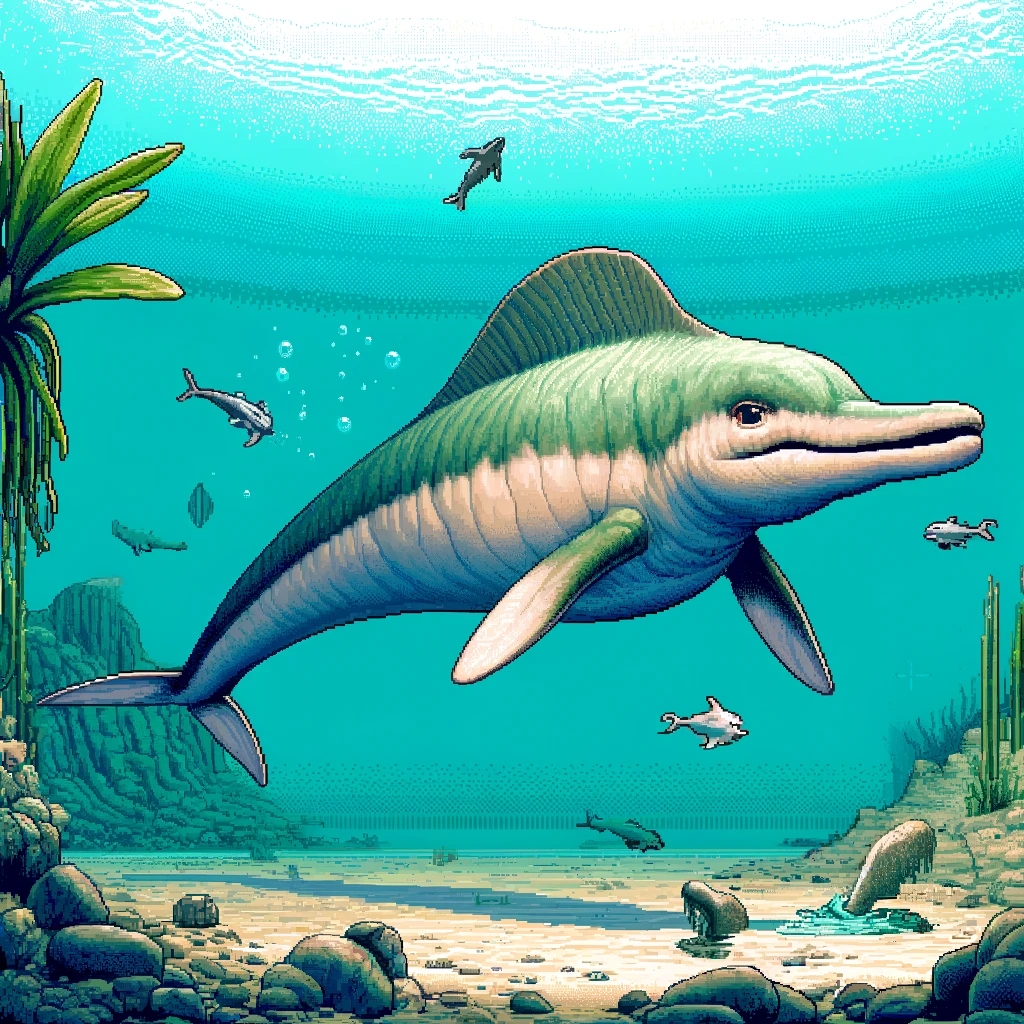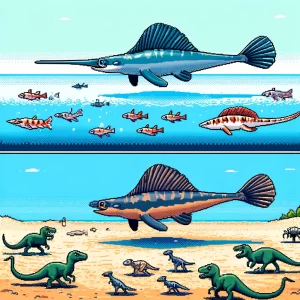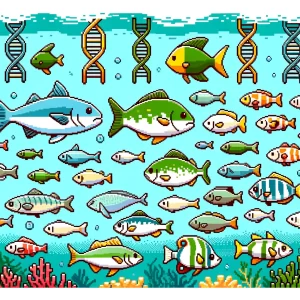
These are very big Ichthyosaurs
In the tranquil coastal stretches of Somerset, UK, recent scientific discoveries have unearthed evidence of some of the most colossal creatures to ever inhabit our oceans. Ichthyosaurs, marine reptiles resembling modern dolphins in form but dinosaurs in scale, roamed our prehistoric seas. Recent excavations have not only shed light on these giant creatures but have also introduced a brand new species, Ichthyotitan severnensis, to the scientific community.
The Discovery of a Giant
At the heart of this discovery is a significant find—a large fragment of a jawbone known as the surangular, belonging to an ichthyosaur. Estimated to have belonged to an individual about 25 meters long, this find is among the largest marine reptiles ever described. That’s about the size of a blue whale. That’s about the size of five bowling alleys back to back!
The jawbone, unearthed from the Westbury Mudstone Formation, dates back to the Rhaetian period of the Late Triassic, around 202 million years ago.
This isn’t the first time such large ichthyosaur fossils have been found in this region. In 2018, another large surangular was discovered nearby, but the recent specimen is even more complete and better preserved. The similarities between the two finds have led scientists to formally declare the existence of a new genus and species.
Significance of the Find
The identification of Ichthyotitan severnensis is a monumental step in understanding the diversity and evolutionary history of marine reptiles. This new species helps fill a crucial gap in our knowledge of ichthyosaur sizes, which seem to have reached their peak in the Late Triassic, just before a mass extinction event.
Additionally, this discovery sheds light on the geographical distribution and environmental conditions of the time, offering clues about the marine ecosystems before the Triassic-Jurassic mass extinction. The size of these ichthyosaurs suggests that they were top predators, playing a crucial role in their ecological niches.
Unraveling Historical Mysteries Through Modern Technology
Scientists used advanced techniques such as 3D photogrammetry to study the fossils in detail without damaging them. This method allowed researchers to create precise digital models of the fossils, providing insights into the anatomy and function of the ichthyosaur’s jaw.
Moreover, histological analysis, which involves studying thin sections of bones under a microscope, revealed unique features in the bone structure, supporting the identification of this new species. These techniques are crucial for understanding the biology and growth patterns of ancient animals without the need for complete skeletons.
What This Means for Science and Society
The study of prehistoric life, especially through the lens of well-preserved specimens such as those of Ichthyotitan severnensis, not only captivates the public imagination but also enriches our scientific understanding of biological evolution and environmental change. Museums and educational institutions can leverage these discoveries to enhance public engagement with science and nature.
Looking Forward
The discovery of Ichthyotitan severnensis is just the beginning. The coastlines of the UK are rich with geological history waiting to be discovered. Each new fossil find provides valuable data that can lead to broader insights into the past, potentially informing future conservation efforts as we better understand the long-term impacts of climatic and environmental shifts.
Encouraging Public Participation
If you’re intrigued by the history beneath our feet and the stories told by the stones and bones that litter our Earth, consider participating in community science projects or visiting local museums (why not the North Museum). Who knows? Perhaps the next big discovery could be waiting for your helping hand.
Embark on a Scientific Adventure:
Join ‘This Week in Science’ and explore the universe of knowledge! Our weekly newsletter is crafted for educators and enthusiasts, bringing you the latest and most exciting scientific discoveries. Every issue is packed with cutting-edge research, breakthroughs, and captivating stories from the world of science. Subscribe now for free and transform your teaching and learning experiences. Embark on your path to becoming more knowledgeable and connected with the ever-evolving world of science.
About the Author
Jon Scaccia, with a Ph.D. in clinical-community psychology and a research fellowship at the US Department of Health and Human Services with expertise in public health systems and quality programs. He specializes in implementing innovative, data-informed strategies to enhance community health and development. Jon helped develop the R=MC² readiness model, which aids organizations in effectively navigating change.



